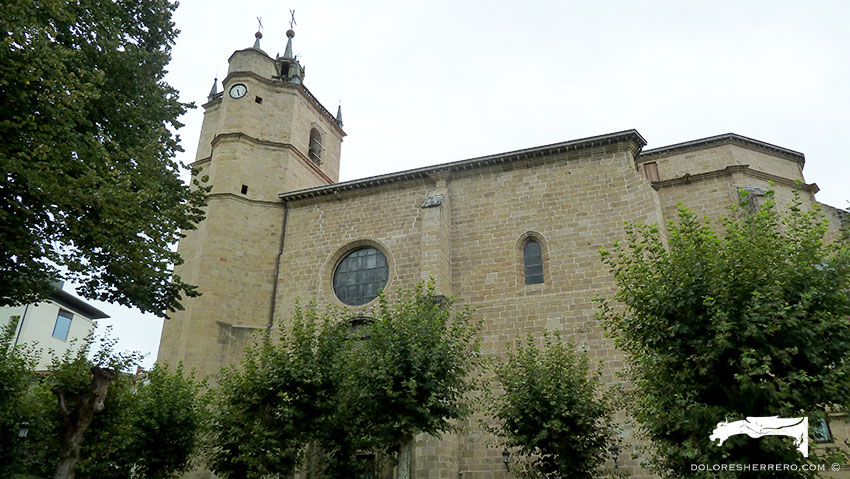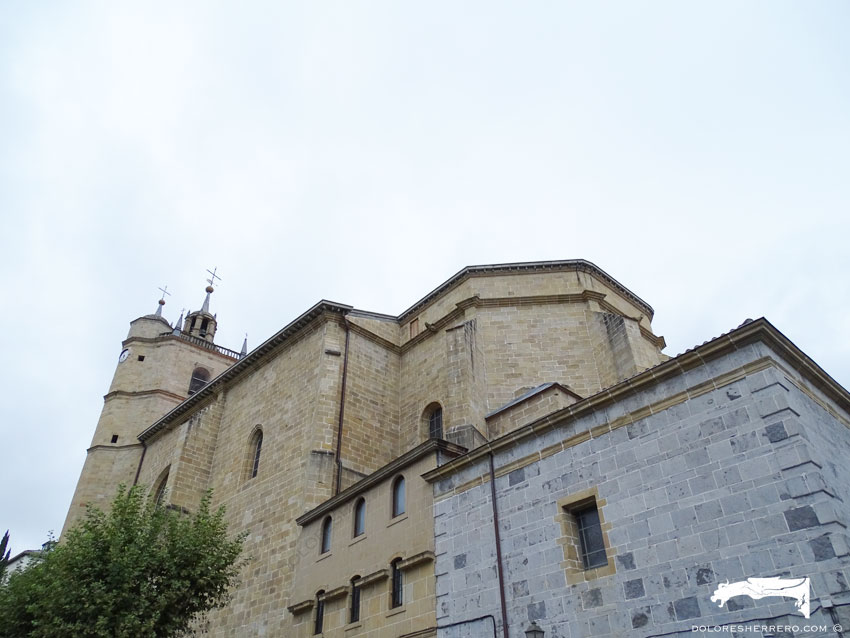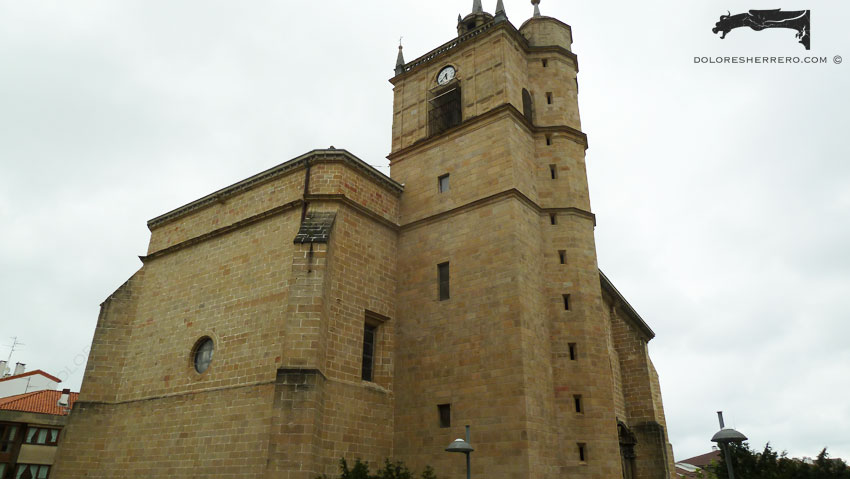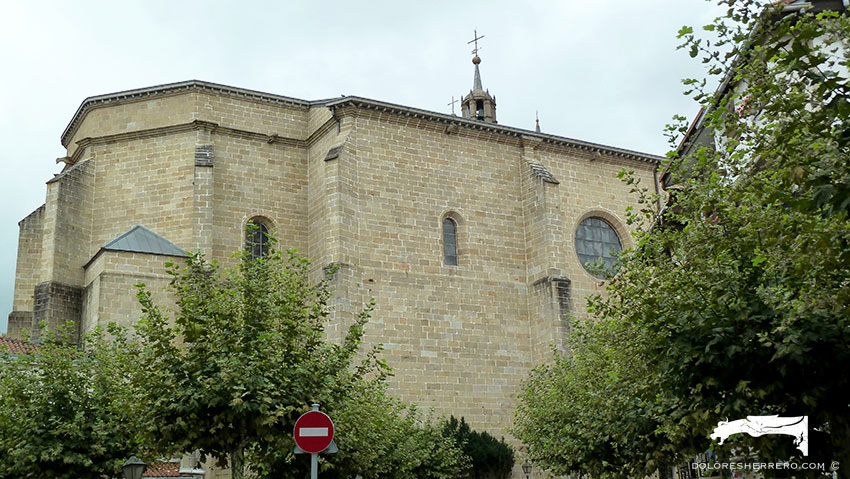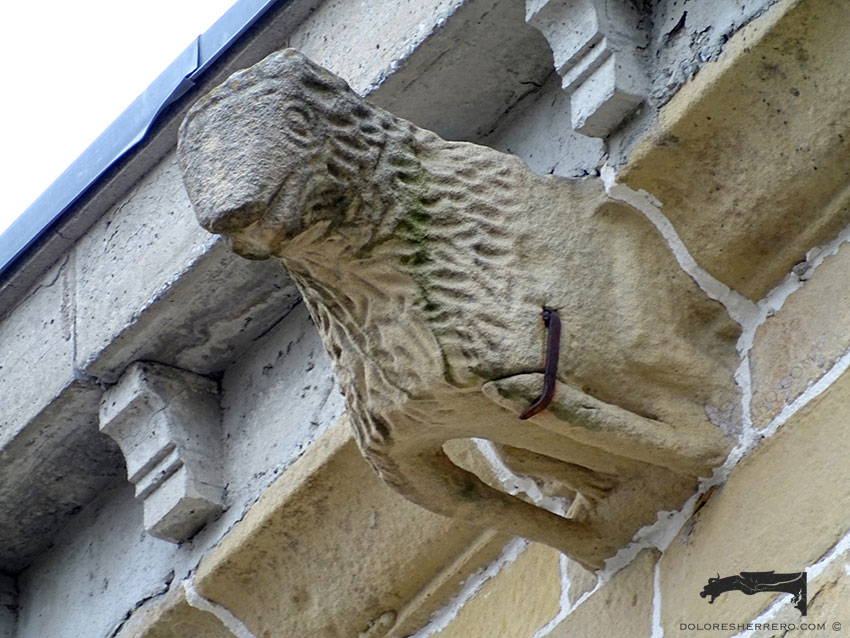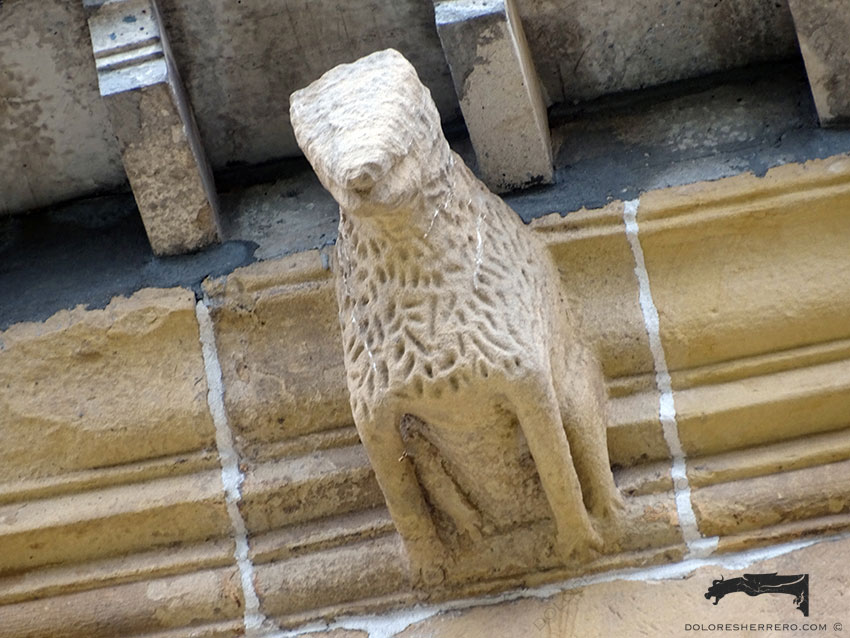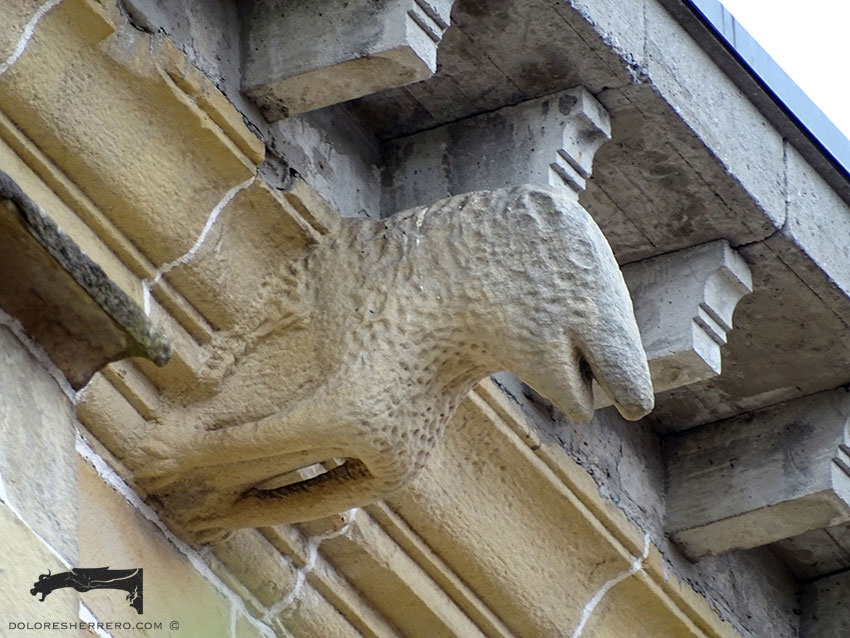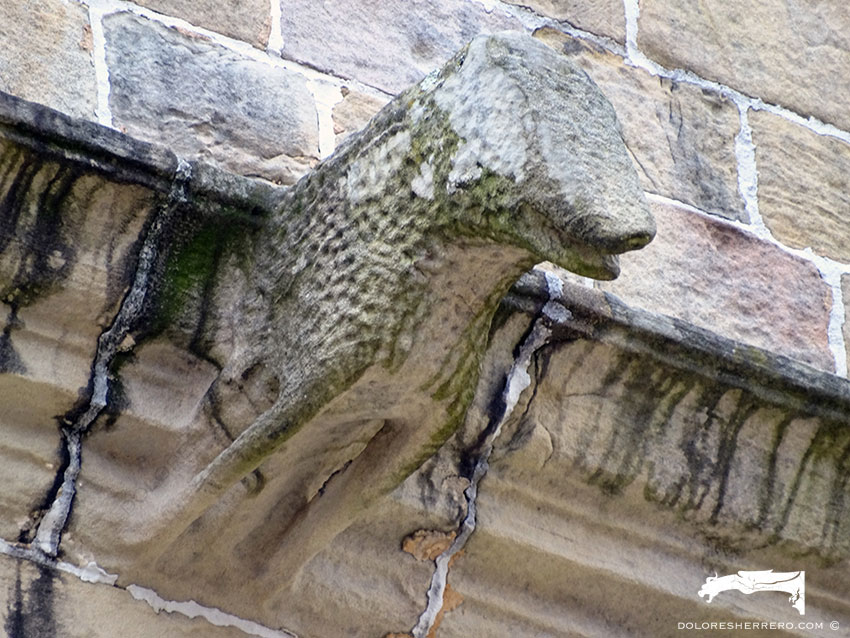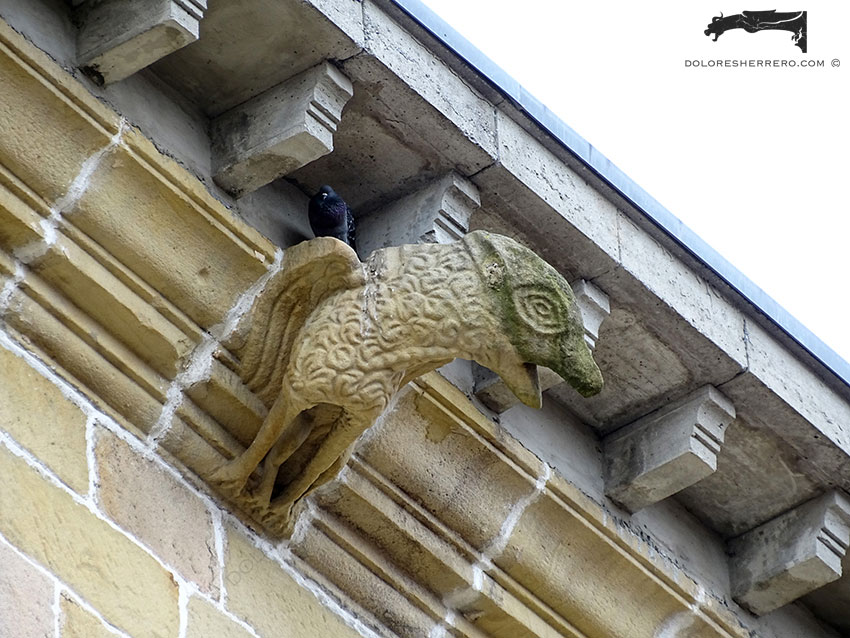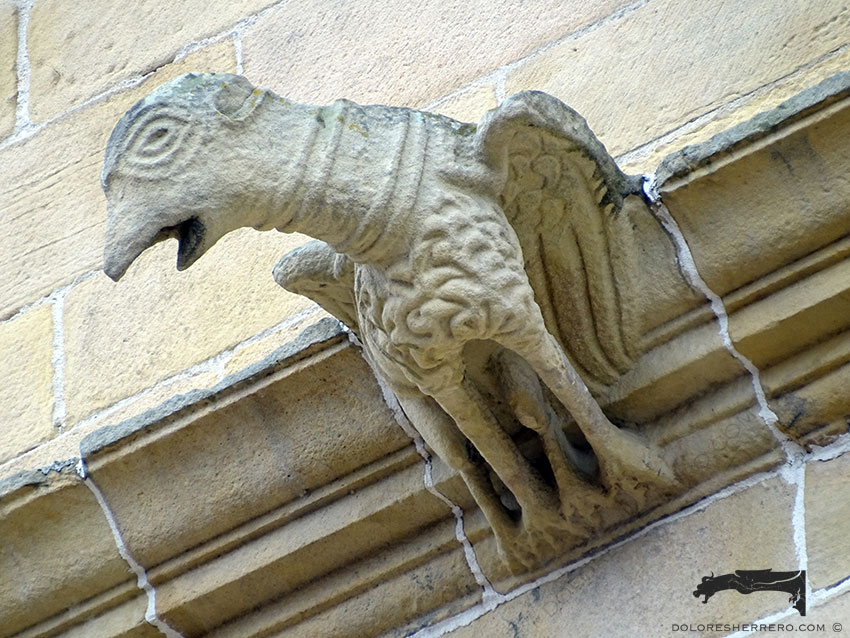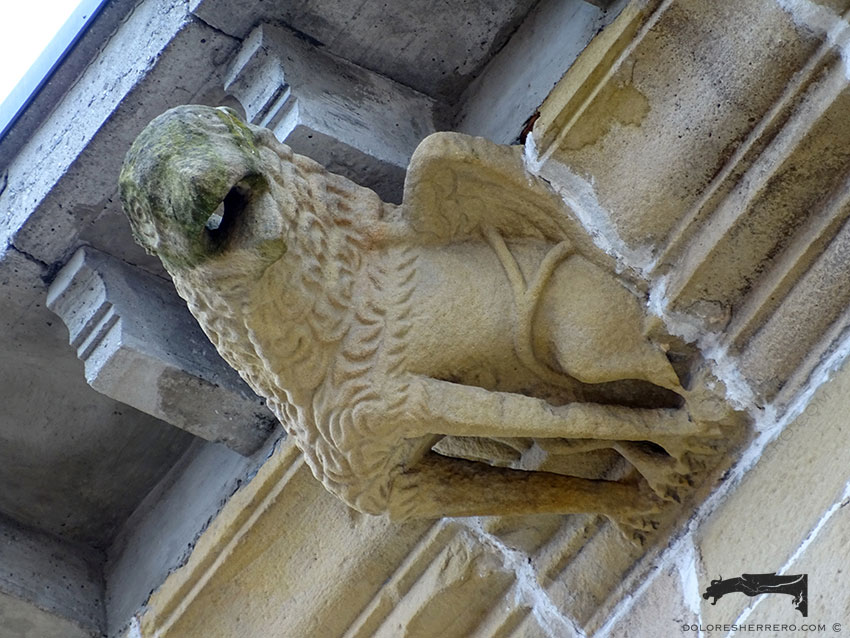After admiring the gargoyles on the “Catedral Nueva” in Vitoria, in today’s post we’ll be continuing to enjoy gargoyles in the Basque Country (Spain).
We’re off to the beautiful city of Irún, where I’ve discovered some of the strangest and loveliest figures I’ve seen on my travels so far.
They are none other than the gargoyles on the Parish Church of Nuestra Señora del Juncal in Irún (Guipúzcoa). This magnificent church was built between the 16th and 17th centuries and combines three architectural styles: Gothic, Renaissance and Baroque.
This beautiful building was declared a National Historical and Artistic Monument in June 1973.
Gargoyles
The gargoyles are both very curious and surprising.
In terms of their types, you can see a real animal between a lion and a lamb. The lamb, as an innocent, docile, phlegmatic and patient animal, represents humility, innocence and patience. Because it was docile even on the altar, it was assumed that it accepted being sacrificed, which is why the Jews used it for their offerings. So, the lamb became the symbol of Christ, who showed the lamb’s docile nature in offering himself as sacrifice to redeem humanity.
There is also a fantastic animal with the appearance of a griffin.
Although we already discussed this in the post about the gargoyles on the La Loge de Mer in Perpignan, we’ll remind you that research on the griffin tells us that it’s a mythical creature, half eagle and half lion. Its depiction dates back to Antiquity (Babylon, Persia, Ancient India). Pliny (1st century) says they were originally from the land of the Scythians (northern Russia) and Aeschylus (6th-5th century B.C.) says they were from Ethiopia. Their two halves grant them all the attributes of the lion (king of the land) and the eagle (queen of the air). History tells us that in in Greece and Rome they were regarded as tomb guardians; for the Greeks they were also an animal of light, and this is why they’re sometimes shown sitting at the feet of statues of Apollo. In Christian symbolism, the fact that the griffin embodied both natures (the eagle and the lion) makes it one of the best emblems of the dual nature of Christ: the eagle’s bust represents the divinity of the Saviour and the lion’s body represents his humanity. The griffin is also a symbol of wisdom and guardian of treasures, especially of emeralds. In terms of its negative powers, the griffin was often used to represent Satan because of its raptor’s beak and its predator’s claws; some medieval authors also link it with the devil for its cruelty and destructive power. Saint Isidore (6th-7th century) says: “They are terribly dangerous for horses. They also tear apart any men they happen to see”.

Although their types are the usual ones, what’s really distinctive about these gargoyles is their sculptural style and the way they’re carved. The figures have some significant features, for example, long, pointed lips, or heads turned sideways, giving the sensation of movement. Plus, some wear decorative items like necklaces or ribbons around their necks, while others wear a breastplate, a kind of strap or girdle that also appears on the gargoyles on Burgos Cathedral (Spain). These adornments, along with almond-shaped, outlined eyes, are reminiscent of images from art in Antiquity (Mesopotamia, Persia). This, added to the presence of the griffin as a creature that probably originated in these cultures, makes them a set of evocative and fascinating gargoyles. They’re further proof of the artistic beauty of gargoyles in the Basque Country.
Bibliography consulted
CHARBONNEAU-LASSAY, L., El bestiario de Cristo. El simbolismo animal en la Antigüedad y la Edad Media, vol. I, Palma de Mallorca, José J. de Olañeta Editor, 1997.
MARIÑO FERRO, X. R., El simbolismo animal. Creencias y significados en la cultura occidental, Madrid, Ediciones Encuentro, 1996.

Doctor of Art History and researcher specializing in the study of gargoyles.
I am Dolores Herrero Ferrio, and my thesis, “An Approach to the Study of Gargoyles of Gothic Cathedrals in Castilla and León”, is dedicated to the study of these fascinating figures.
If you like gargoyles and art history, you will also enjoy my book, “The Gargoyle and Its Iconography,” a book I have written with great care for those interested in the world of gargoyles.
I have created my own Encyclopedia of Gargoyles, a Gargopedia to share with you, where you will discover all the secrets and wonders of these enigmatic sculptures.
I hope you enjoy this Gargopedia as much as I have enjoyed creating it, and remember that each gargoyle has a story to tell, and here you will discover them all.
